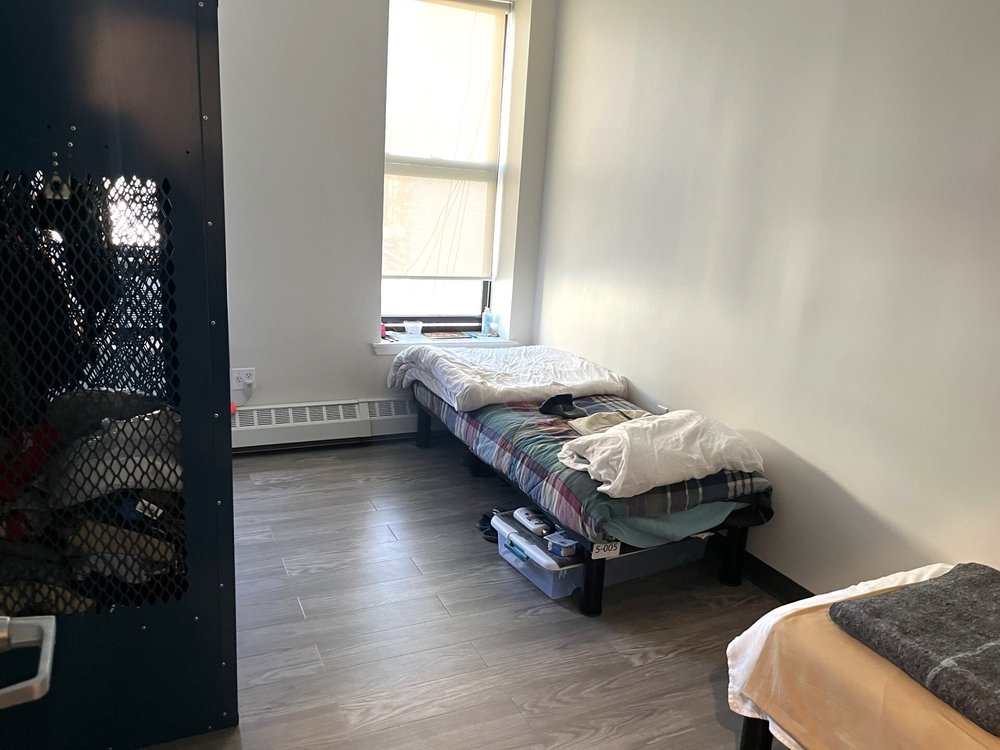NYC vowed to put more social workers in shelters. So far the results are promising.
July 22, 2025, 6:01 a.m.
In 2023, the City Council required all homeless shelters for families with children to provide one mental health professional for every 50 families.

Nearly two years after the New York City Council mandated family shelters to expand mental health services, a majority of facilities now each have at least one social worker on site.
As of April, about three-quarters of the city’s 131 shelters housing children each had a mental health professional on staff, the Department of Homeless Services said. Among the 30 largest shelters, that number was higher: 83% each had a mental health staffer.
The progress is a significant step toward supporting families who often end up homeless because of domestic violence or eviction. Shelter providers say many parents struggle with depression, anxiety and trauma — and getting them and their children the help they need will help end the cycle of homelessness, particularly as the city braces for federal cuts to safety net programs that feed and house New Yorkers.
“The biggest factor that contributes to somebody becoming a homeless adult is if they were a homeless child. So to deal with the mental health effects of homelessness on children is one of the most important things we can do to prevent homelessness in a second generation,” said Christine Quinn, president and CEO of WIN, the largest provider of shelter for families with children in the country.
The legislation, which passed in 2023, requires each family shelter to have one full-time mental health professional for every 50 families. The 30 highest-volume shelters were supposed to meet the requirement last July and all other shelters have until the end of the month to do so.
“ This is all progress because, in the not too distant past, most shelters had little to no on-site services of any kind, and that was grossly unacceptable,” said Manhattan Councilmember Erik Bottcher, who sponsored the law. “We’ll get there.”
DHS spokesperson Nicholas Jacobelli said the city was working with providers to comply with the measure by offering staff training, helping shelters recruit staff and allowing flexibility in their city-funded budgets so they can hire mental health workers. He said early results are promising: At the 30 largest shelters, referrals to outside mental health services more than doubled and serious psychiatric incidents dropped 67% in the last year.
But providers said though they agreed with the intent of the law, many were struggling to hire and retain mental health workers. Licensed social workers can perform evaluations under the supervision of a licensed clinical social worker, who have a higher level of expertise.
“If we were able to retain our staff, we could be super impactful. It’s just difficult,” said Marjorie Jeannot, vice president of family shelters at BronxWorks. “It’s not healthy for our population because it’s a revolving door. You have one person the social worker earned their trust and then they disappear.”
Jeannot said all four of BronxWorks family shelters each had a social worker even before the law went into effect, but it was difficult to maintain the ratio of one mental health professional for every 50 families. BronxWorks invests in helping early career social workers get their license, but they are often hired by hospitals or schools who can pay an extra $20,000.
Having a licensed social worker means a shelter can complete the psychiatric evaluations needed to more quickly get people into supportive housing programs — which permanently house people with mental health illnesses or who are homeless, as well as provide supportive services. Licensed social workers can perform evaluations under the supervision of a licensed clinical social worker.
Even as the population of asylum-seekers in city shelters plummets, the number of individuals living in shelters who aren’t migrants increased 12% last year. The 131 family shelters house more than 38,000 people, more than half of whom are children.
The largest shelters had a ratio of one social worker for every 78 families as of last October, according to the most recently available data in the city’s annual reporting on its compliance with the law.
Bottcher said he was excited by the initial numbers.
“This is critical to combating serious mental illness in New York City and this relates directly to the crisis that we see unfolding on our streets and subways every day,” he said.
“When we see someone in the subway car suffering from serious mental illness, it's important to know that that was 100% preventable … if they had been diagnosed and treated at a younger age.”
Quinn said she was encouraged by the law’s implementation so far, but there was still more to be done to expand the type of mental health services available for families, so more on-site services are available. Most social workers are screening families, referring them to other mental health providers or connecting them with telehealth services provided by NYC Health and Hospitals.
“They need to allocate funds so we can hire the type of staff we really need,” Quinn said. ”What I would like to see is every shelter have a social worker who has experience, who has clinical experience. That's really important. And a social worker or psychologist who has trauma-informed care experience.”
This story has been updated with additional information about the requirements for social workers to perform psychiatric evaluations.
‘Nowhere to go’: More New Yorkers are entering city homeless shelters, report says 4 in 10 NYC shelters have no AC in sleeping areas. The city is trying to change that.